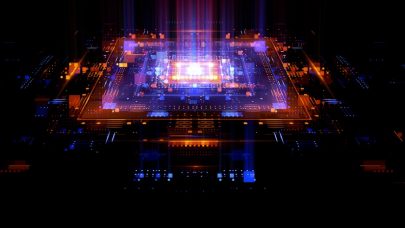July 13, 2023 — A research team from Nagoya University has precisely replicated air turbulence observed on cloudless days near Tokyo using Japan’s swiftest supercomputer. Subsequently, they juxtaposed their results with flight data to forge a heightened predictive framework. The study was documented in the journal Geophysical Research Letters.

Despite the typical association of air turbulence with inclement weather, it is noteworthy that an aircraft cabin can experience severe shaking even under sunny and cloudless conditions. Referred to as clear air turbulence (CAT), these turbulent air movements can manifest in the absence of observable clouds or other atmospheric disruptions. While the precise mechanisms responsible for CAT remain incompletely comprehended, prevailing theories suggest that it is primarily influenced by wind shear and atmospheric instability.
CAT presents a significant peril to aviation safety. The abrupt occurrence of turbulence during an otherwise serene day can result in injuries to passengers and crew members, harm to the aircraft, and disruptions to flight operations. Pilots depend on information from other aircraft, weather radar, and atmospheric models to anticipate and steer clear of zones with potential turbulence. Nonetheless, due to the absence of discernible indicators like clouds or storms, the detection and prediction of CAT pose distinct challenges.
As the winds swirl and circulate, giving rise to abrupt alterations in airflow, the formation of eddies occurs, which possess the potential to jolt an aircraft. Consequently, in order to gain deeper insights into CAT, scientists employ a computational fluid dynamics technique known as large-eddy simulation (LES) to simulate these turbulent flows. Nevertheless, despite its significance in air turbulence research, LES encounters a formidable obstacle in the form of computational cost. The intricate interplays involved in LES simulations necessitate substantial computing power to accurately replicate the phenomena.
In order to meticulously simulate the process of turbulence generation using high-resolution LES, the Nagoya University research group resorted to the utilization of the Fugaku supercomputer, an exascale computing system. Regarded as the second fastest supercomputer globally, Fugaku boasts exceptional performance capabilities. This high-performance computing resource enabled the researchers to conduct their simulations with heightened precision and detail.
Leveraging the immense computational power of Fugaku, Dr. Ryoichi Yoshimura from Nagoya University, in collaboration with Dr. Junshi Ito and other researchers from Tohoku University, embarked on an ultra-high-resolution simulation of CAT occurring above Haneda airport in Tokyo during the winter season. This particular turbulence was attributed to a combination of factors, including low pressure and the presence of a nearby mountain range. The advanced capabilities of Fugaku allowed the researchers to delve into the intricate details of the turbulent airflow with exceptional precision.
Their investigation revealed that the disturbance in wind speed was instigated by the disintegration of a Kelvin-Helmholtz instability wave. This type of instability arises at the interface between two air layers possessing distinct velocities. As the higher-velocity layer imparts a pulling force on the lower-velocity layer, a wave-like pattern emerges. Subsequently, as the atmospheric waves propagate from the west and eventually collapse in the east, a series of intricate vortices form, culminating in the manifestation of turbulence. This phenomenon highlights the role of Kelvin-Helmholtz instability in the generation of the observed turbulence.
Following their computations, the research group faced the task of verifying the consistency between their simulated vortices and real-world data.
Dr. Yoshimura stated, “Around Tokyo, there is a plethora of observational data accessible to corroborate our findings.” He further explained that the abundance of airplanes flying over the airports led to numerous reports regarding turbulence and the intensity of shaking. Additionally, data obtained from atmospheric observations conducted by a balloon near Tokyo was utilized. The recorded shaking data from that specific period served as crucial evidence in validating the accuracy of their calculations.
“The outcomes of this study are expected to yield a more profound grasp of the principle and mechanism behind turbulence formation through high-resolution simulation. This will enable us to explore the ramifications of turbulence on aircraft with enhanced precision,” expressed Yoshimura. “Given that substantial turbulence has been observed within a confined 3D zone, it becomes conceivable to adjust flight altitudes and avoid flying through the region, provided the presence of active turbulence is preemptively identified. LES could offer an intelligent approach to flight by delivering more precise turbulence predictions and real-time forecasts.”
Source: Nagoya University





























































